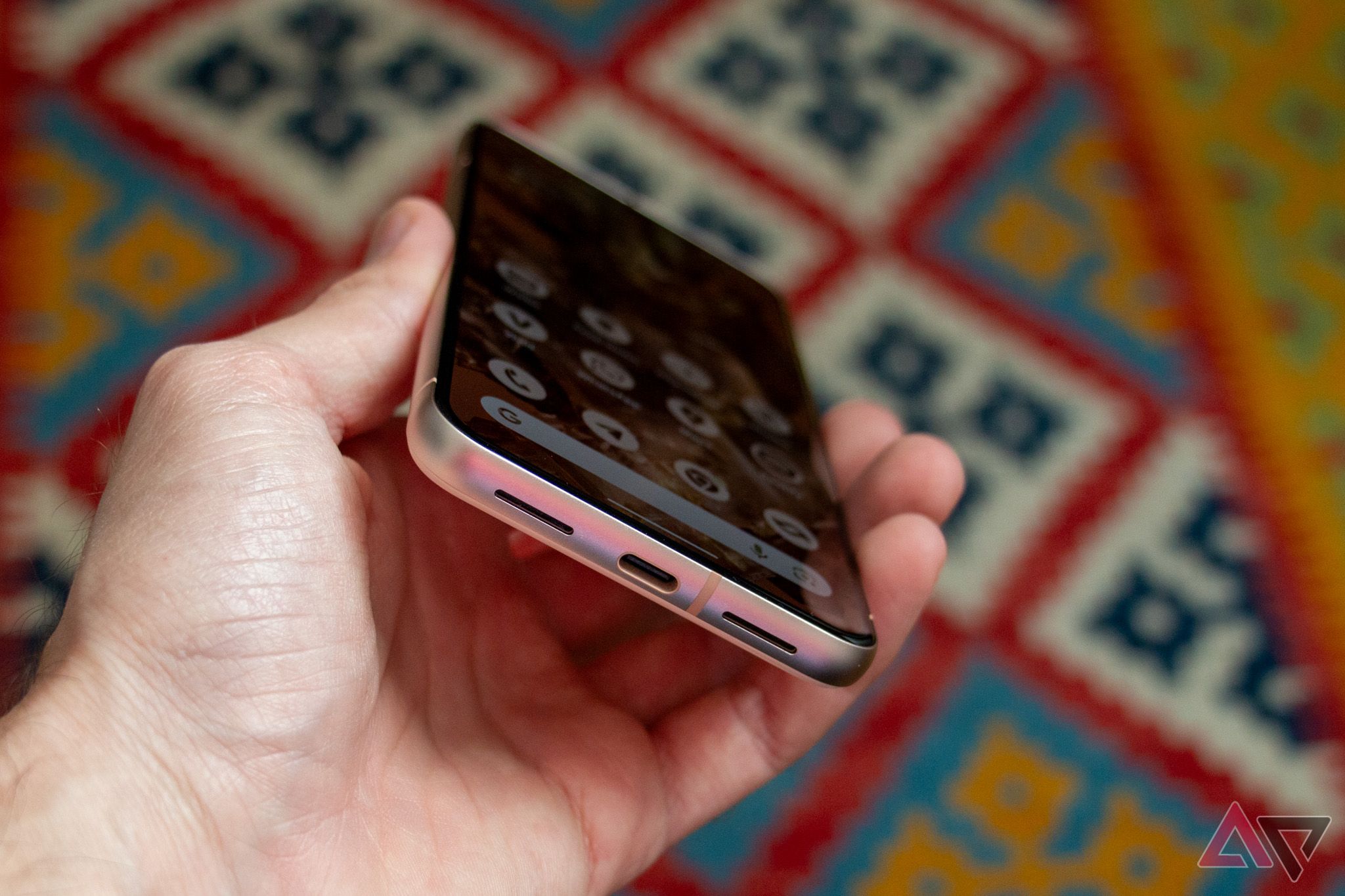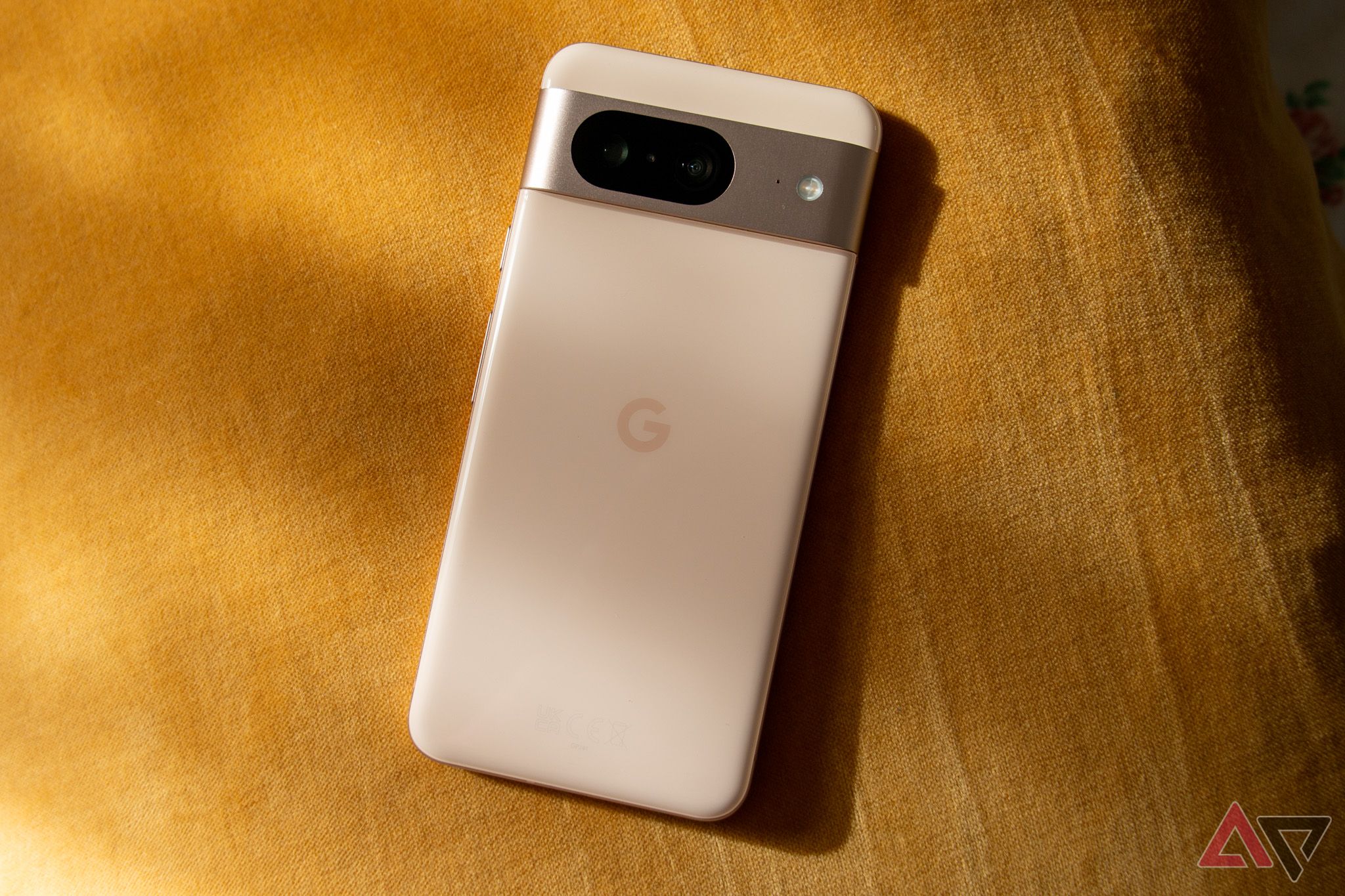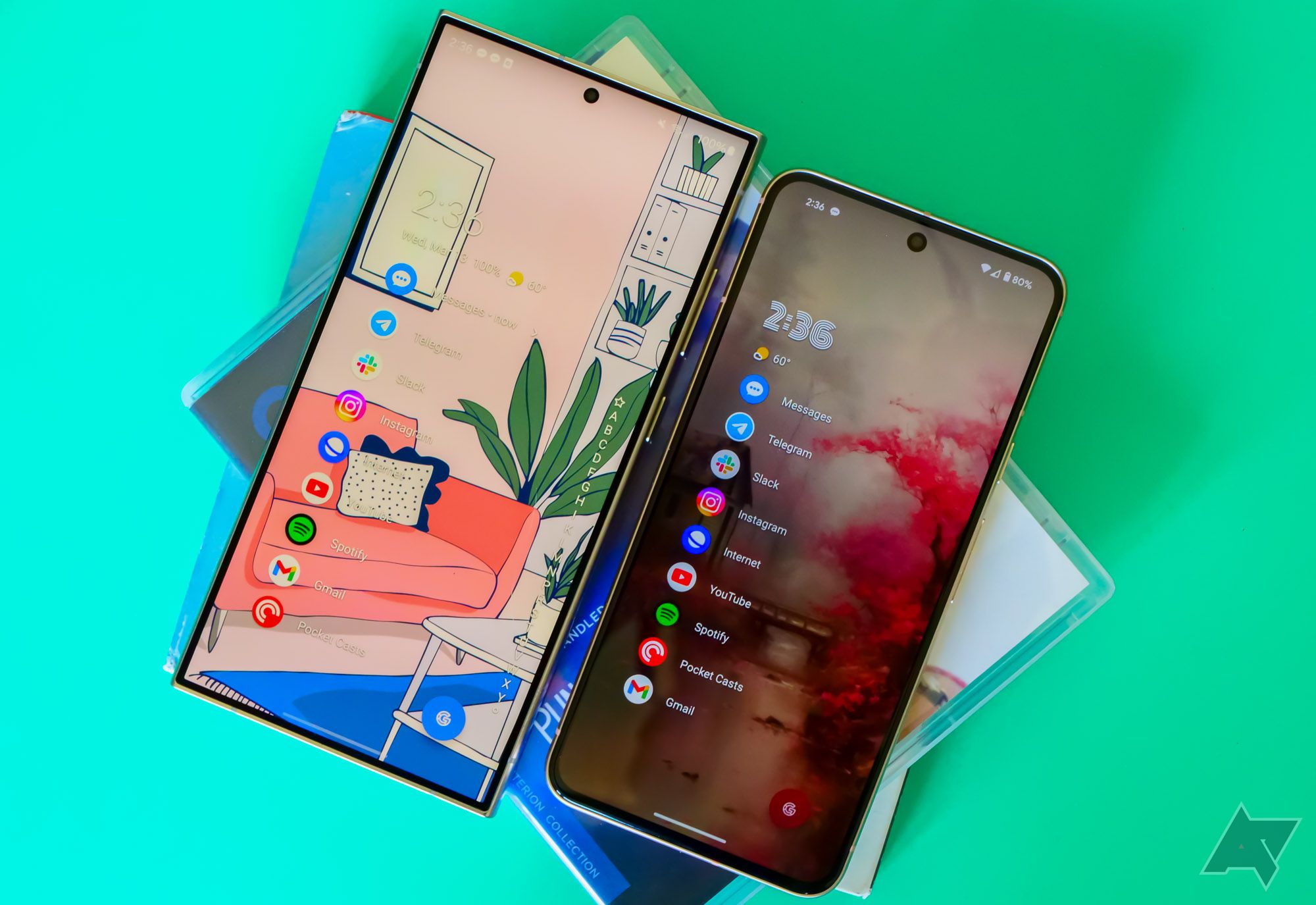Like many of our readers, I’ve spent the last few years listening to cries for smaller smartphones with a single eyebrow raised. Sure, my assortment of smartphones rocking 6.7-inch displays — give or take — feel a little unwieldy at times, but who would sacrifice all that glorious screen real estate just for something that fits a little more comfortably in your pocket? But some recent Android phone whiplash has given me a new perspective on the current state of smartphones. And frankly, I think it’s time for some brave OEM to consider giving pocket-friendly phones another shot.
Two phones, two very different experiences
The Pixel 8 feels positively tiny next to the Galaxy S24 Ultra
We’re in a lull for reviews at the moment, sandwiched between early 2024 flagships like the OnePlus 12 and the summer slate of rumored devices like the Pixel 8a and the Galaxy Z Fold 6. As usual, I’ve used this opportunity to revisit phones I’ve reviewed alongside devices in my collection that never found their way to daily driver status. That’s how, over the last couple of weeks, I’ve ended up flip-flopping between Samsung’s Galaxy S24 Ultra and the smaller Pixel 8.
In many ways, these are two diametrically opposed phones, really only linked by their common operating system and a nominal focus on AI. One is a boxy device carrying on the Note’s legacy of productivity and big screens, the other is an entry-level flagship designed more than anything to compete head-on with the iPhone. Hell, just look at the price tags: the S24 Ultra is nearly double the price of the Pixel 8.
Using these phones back to back, however, gave me a perspective most smartphone owners can’t have: it’s time to return to small phones. As much as I like the Galaxy S24 Ultra’s display — it’s the best screen you can find on a smartphone today — this device is just too big, too heavy, for me to carry around as a daily driver. Despite the move to a flat-edged screen and the potential for titanium to have driven down the weight (it didn’t, unfortunately), this phone might serve as a breaking point for me.
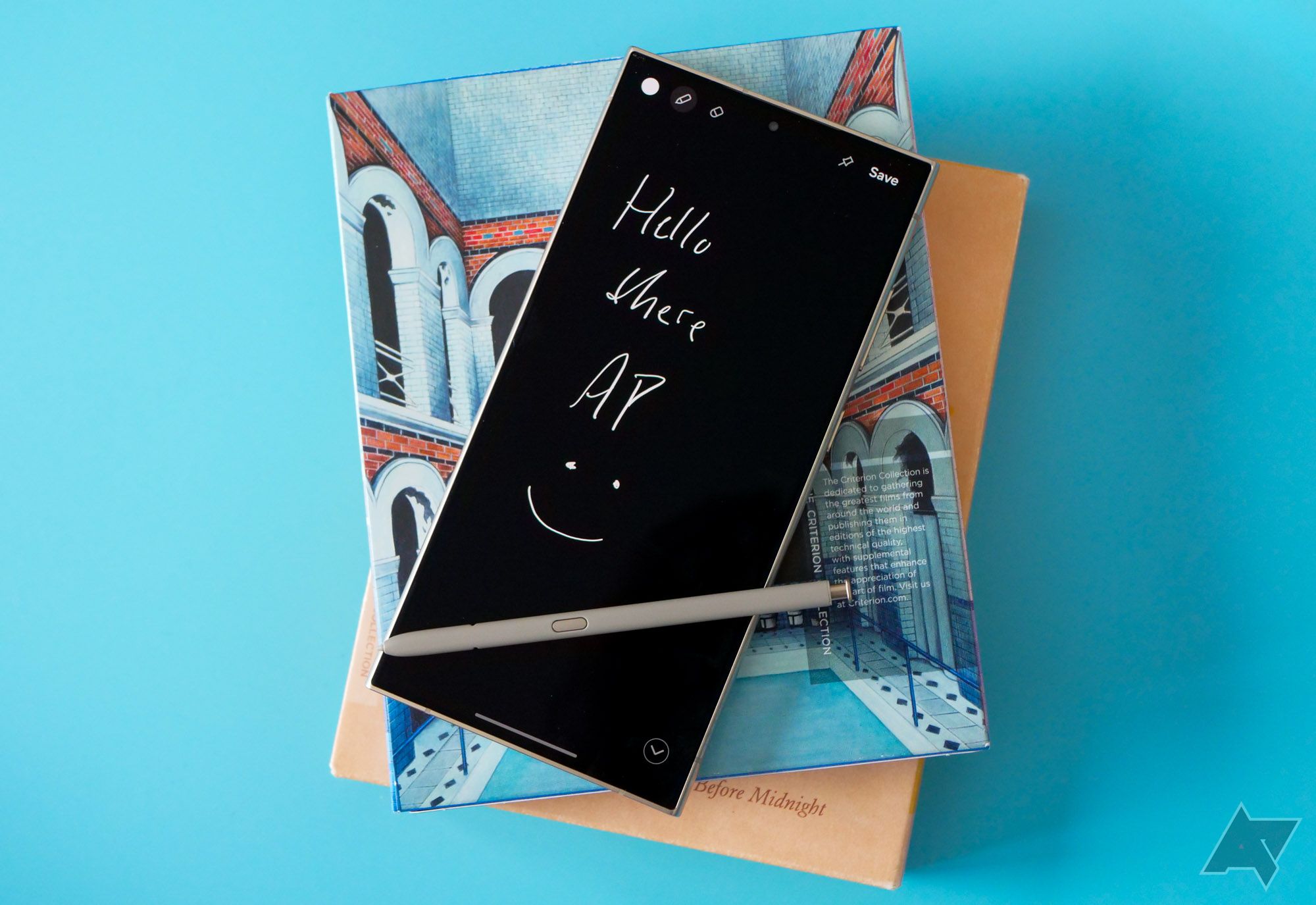
Samsung Galaxy S24 Ultra review: Still the best, unless you take photos
Without any meaningful changes, Samsung’s latest phablet feels like a do-over for last year’s smartphone
A breath of fresh air for smartphones
Maybe this is how all gadgets should feel
If I was being honest, though, I don’t think I would’ve felt this way if I hadn’t picked up my Pixel 8 review unit, months after it started gathering dust in my closet. Although I received both devices back in October, my time with Google’s latest generation of phones has been spent nearly entirely on the Pixel 8 Pro. That’s not just because it’s the one I reviewed, either. Google’s decision to hold the Pixel 8 back in terms of both hardware and software led me to more or less write the phone off, despite finding it perfectly adorable during my initial hands-on time.
But last week, exhausted from lugging around the Galaxy S24 Ultra, I decided to give the Pixel 8 a proper spin for the first time in five months. Initially, I found it to be a breath of fresh air. A 6.2-inch screen is hardly small, but compared to the average Android phone, it felt positively tiny in my hands. Factor in its weight — it’s lighter than both the Pixel 7 and Pixel 7a — and it’s one of the first smartphones I’ve used in ages that just feels comfortable, especially in one-handed use.
Considering Android’s entire pitch as a platform is built around user choice, I’d like to see at least one mainstream OEM give it a shot.
Of course, those feelings are what you’ll find when you’re jumping from the Galaxy S24 Ultra, a device that absolutely dwarfs Google’s hardware in both size and weight. Give it a few days, and that small phone feeling starts to fade away because, well, the Pixel 8 is only a small phone by our modern standards. Let me repeat: I’m feeling this from a 6.2-inch display. The Galaxy Note 8 — you know, an entry in the lineup that, in part, led to the screen sizes you’ll find today — had a 6.3-inch panel. Sure, that phone is more than half a decade old, but it just shows you the direction the market has headed since, well, the early 2010s.
You don’t know what you’ve got ’til it’s gone
And small smartphones are definitely gone
Look, I’m realistic. I know the odds of getting a new small Android phone aren’t great. Asus is transforming its Zenfone — one of the few lineups left where you could reliably find devices with displays smaller than six inches — into a more standard big-screen experience. Apple killed the iPhone mini series with the iPhone 14 in 2022 and never looked back, even as its Plus-sized replacement continued to sell poorly. Everyone else left this space behind ages ago.
And I get it. Bigger phones have so many advantages — longer lasting batteries, more space for better cameras, more expansive screens perfect for binging through 3 Body Problem while stuck on a cross-country flight — that it’s tough for most consumers to justify picking a cramped experience. It’s not until you remember how nice it is not to constantly feel your phone in your pocket, or how enjoyable one-handed texting can be, that you realize small phones might have a future after all.
But really, I think if the options were there — and consumers actually gave them a shot — you might find you don’t miss that big screen after all. Considering Android’s entire pitch as a platform is built around user choice, I’d like to see at least one mainstream OEM take a chance. Hell, in a world where smartphone design is truly stagnant, returning to a smaller form factor might even help the experience feel fresh.
In the meantime, I’ll keep taking wins where I can find them. The Pixel 9’s leaked dimensions point to a smartphone nearly identical in shape and size to its predecessor, but with the addition of a long-demanded telephoto sensor. The Galaxy S24, meanwhile, includes the same 6.2-inch panel as the Pixel 8 but shaves around 20 grams off the final weight — I’m dying to get my hands on one. Maybe in a couple of years, we’ll be back to sub-6-inch smartphones. One can only hope.
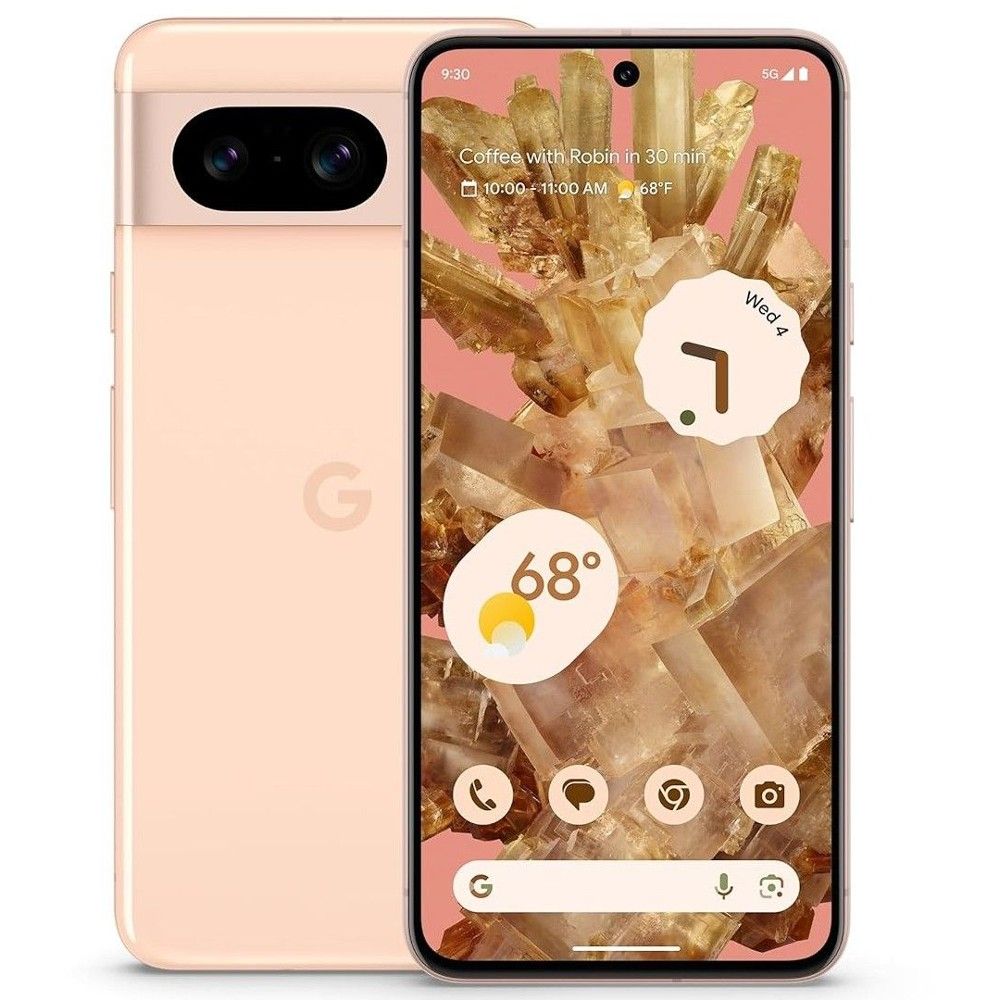
Google Pixel 8
The Google Pixel 8 is Google’s best phone yet, and it’s the most distinct regular model when compared to the Pro version. It comes with a wonderful form factor that fits well in the hands and has the usual software prowess that you expect from a Pixel.
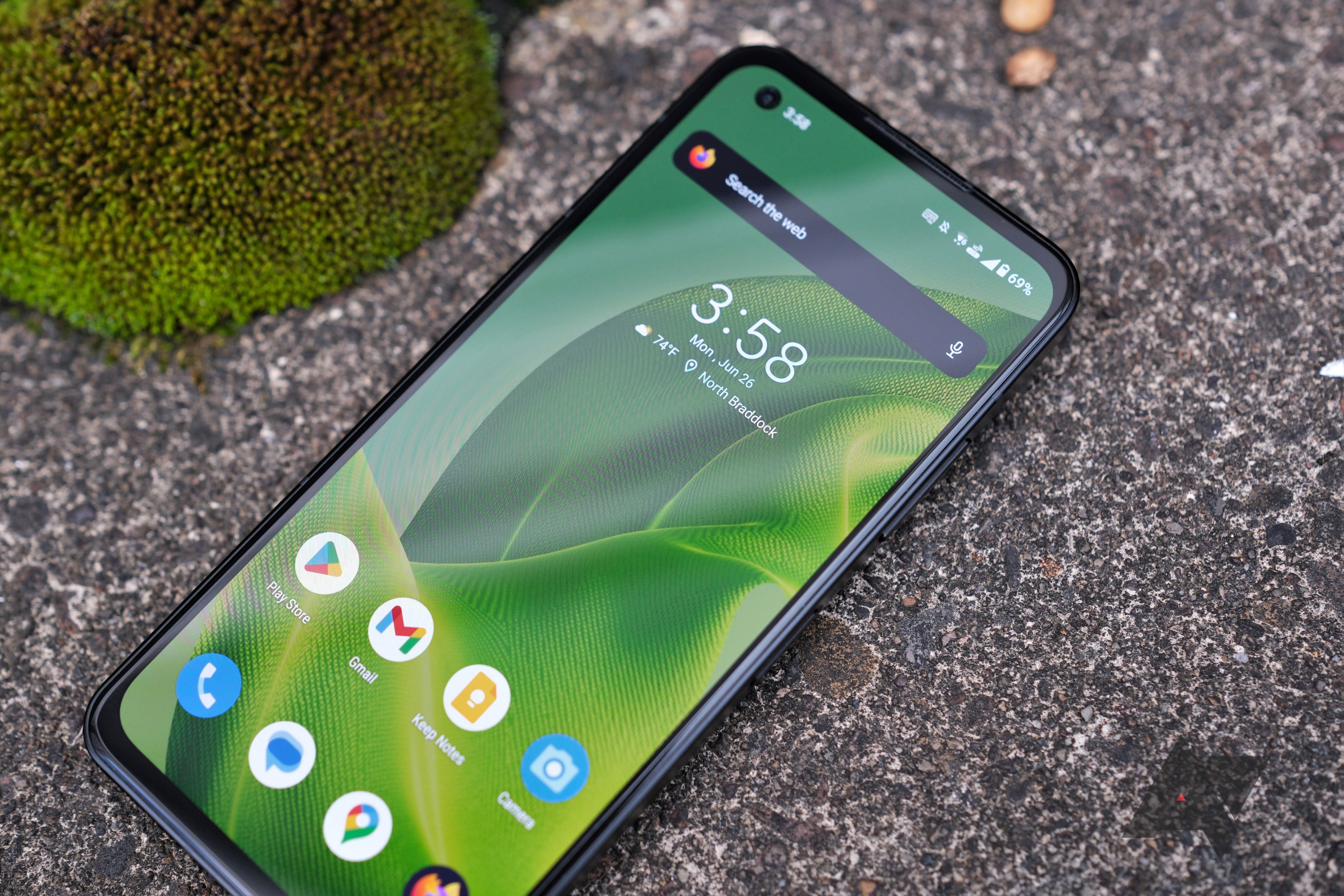
I want to live in a world where small phones can coexist with behemoths
The death of the compact flagship





